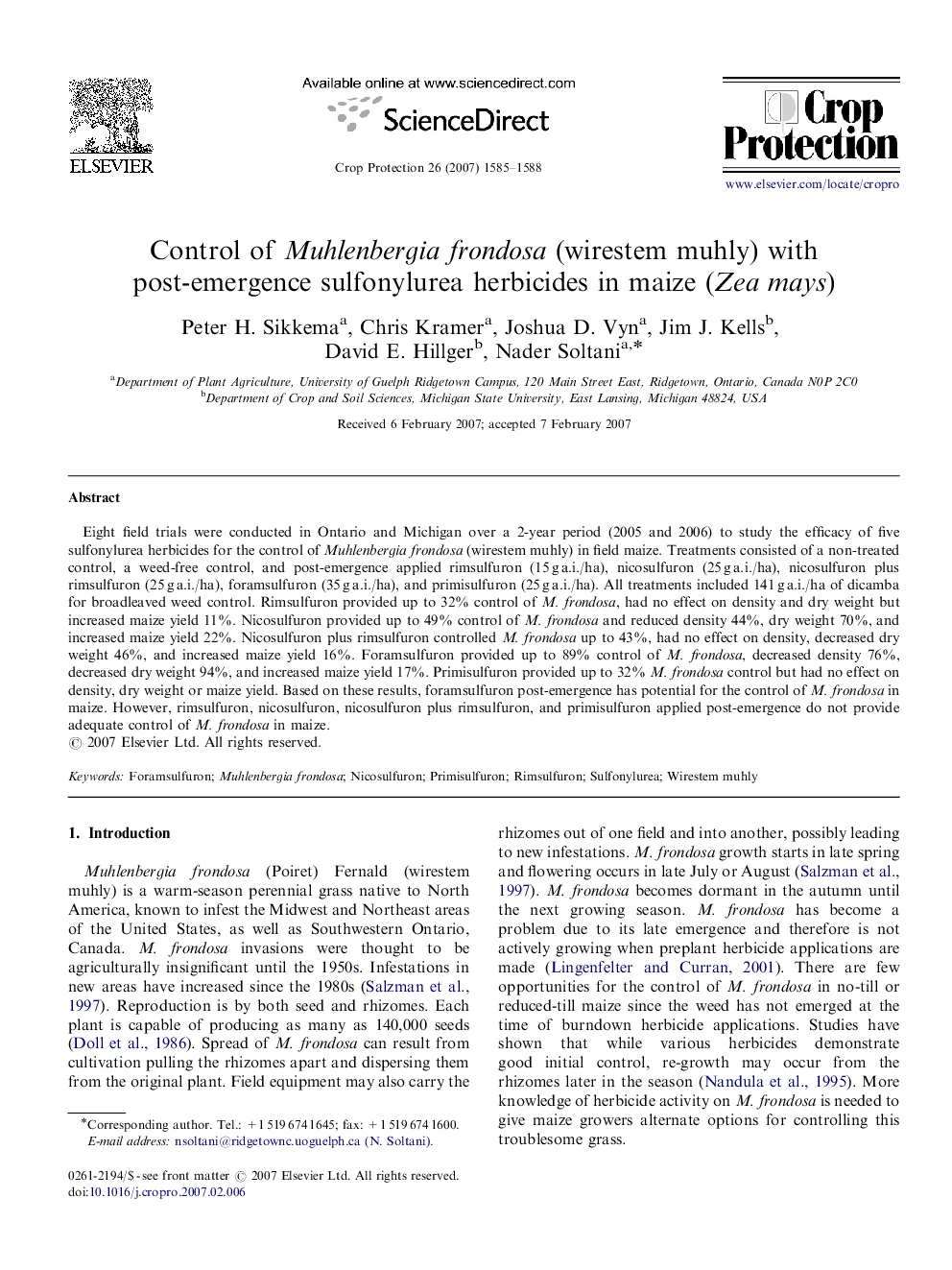| Article ID | Journal | Published Year | Pages | File Type |
|---|---|---|---|---|
| 4507786 | Crop Protection | 2007 | 4 Pages |
Eight field trials were conducted in Ontario and Michigan over a 2-year period (2005 and 2006) to study the efficacy of five sulfonylurea herbicides for the control of Muhlenbergia frondosa (wirestem muhly) in field maize. Treatments consisted of a non-treated control, a weed-free control, and post-emergence applied rimsulfuron (15 g a.i./ha), nicosulfuron (25 g a.i./ha), nicosulfuron plus rimsulfuron (25 g a.i./ha), foramsulfuron (35 g a.i./ha), and primisulfuron (25 g a.i./ha). All treatments included 141 g a.i./ha of dicamba for broadleaved weed control. Rimsulfuron provided up to 32% control of M. frondosa, had no effect on density and dry weight but increased maize yield 11%. Nicosulfuron provided up to 49% control of M. frondosa and reduced density 44%, dry weight 70%, and increased maize yield 22%. Nicosulfuron plus rimsulfuron controlled M. frondosa up to 43%, had no effect on density, decreased dry weight 46%, and increased maize yield 16%. Foramsulfuron provided up to 89% control of M. frondosa, decreased density 76%, decreased dry weight 94%, and increased maize yield 17%. Primisulfuron provided up to 32% M. frondosa control but had no effect on density, dry weight or maize yield. Based on these results, foramsulfuron post-emergence has potential for the control of M. frondosa in maize. However, rimsulfuron, nicosulfuron, nicosulfuron plus rimsulfuron, and primisulfuron applied post-emergence do not provide adequate control of M. frondosa in maize.
